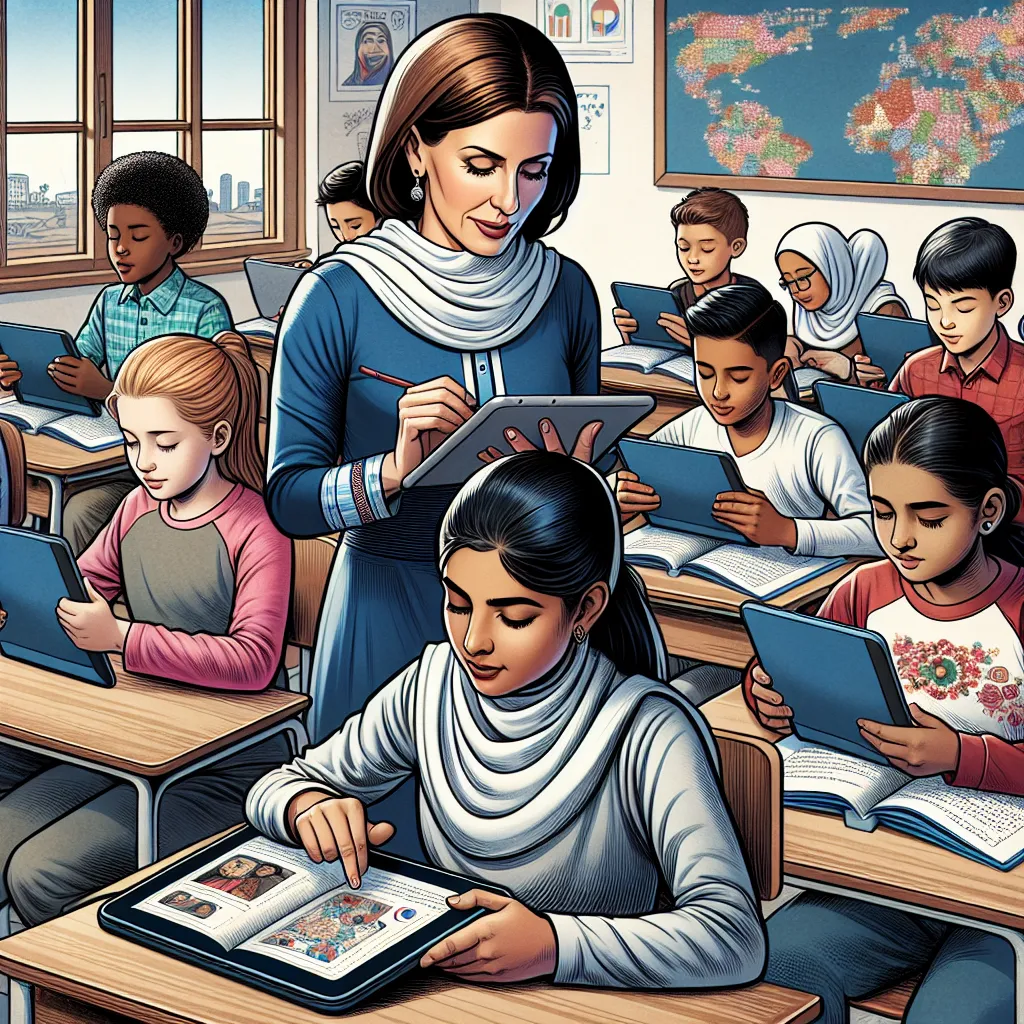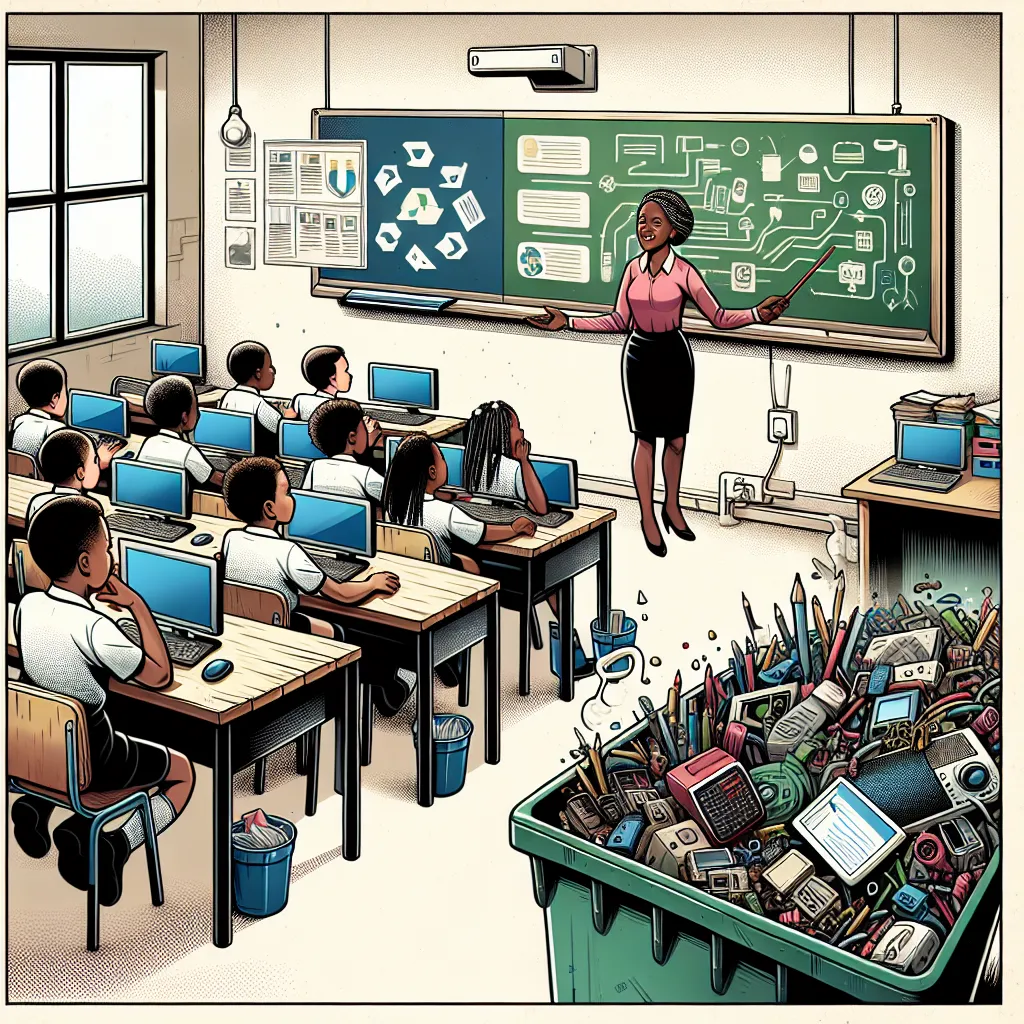Ask AI on The Internet
Question: THE ASSIGNMENT Title: Leveraging ICTs for Effective Education: South African Schools and Classroom Integration Assignment 3: (100 marks) Instructions: • This assignment is designed for CIC2601 students and explores the integration of Information and Communication Technologies (ICTs) in South African schools and strategies for supporting their effective use in classroom activities. • Answer all questions thoroughly and provide examples where relevant. • Ensure clarity, organization, and coherence in your responses. • Reference credible sources when necessary. Part 1: Understanding ICT Integration in South African Schools (40 marks) 1. Define ICT (Information and Communication Technologies) and explain why its integration is crucial in the context of South African education. [10] 2. Identify and elaborate on three significant challenges faced by South African schools when integrating ICTs into their educational framework. Provide specific examples if available. [15] 3. Discuss the digital divide issue in South African schools. How does it impact students' access to ICT resources and their learning experiences? Propose possible solutions to bridge this divide. [15] Part 2: Strategies to Support ICT Integration in Classroom Activities (40 marks) 4. Describe the SAMR (Substitution, Augmentation, Modification, Redefinition) model for technology integration. How can South African educators apply this model to enhance classroom activities with ICTs? [10] 5. Explain three innovative ways in which teachers can effectively use ICTs to engage students and facilitate active learning in the classroom. Provide examples for each. [10] 6. Discuss the importance of continuous professional development for educators concerning ICT integration. Outline specific training and support mechanisms that can empower teachers to use ICTs effectively. [10] 7. Explore the role of partnerships with local businesses or organizations in aiding South African schools with ICT resources and support. Provide examples of successful collaborations. [10] Part 3: Reflection and Future Action (20 marks) 8. On your personal experiences or observations regarding ICT integration in education. Share one specific example of successful ICT use in a classroom or educational setting and analyze why it was successful. [10] 9. As a prospective educator or concerned individual, propose three actionable steps that you can take to contribute to the integration of ICTs in South African schools. Explain how these actions could positively impact the educational landscape. [10] Marking Guidelines: • Each question is assigned a specific mark value (as indicated above). • Responses should be well-structured, coherent, and supported by relevant information. • Proper grammar, spelling, and referencing of sources are crucial for full marks. • Originality and thoughtful analysis will be rewarded. • The assignment will be assessed out of 100 marks
Certainly! Below is a framework for how you can approach and structure your assignment, along with some key points and suggestions for each section. --- ### Part 1: Understanding ICT Integration in South African Schools (40 marks) 1. **Definition and Importance of ICT Integration** - **Definition of ICT:** Information and Communication Technologies (ICTs) encompass digital tools and resources used for communicating, creating, storing, and managing information. - **Importance in South Africa:** - Bridging the education gap by providing equal access to information. - Developing technical skills that are critical for the 21st-century job market. - Enhancing learning experiences through interactive and personalized education. 2. **Challenges in ICT Integration** - **Infrastructure Issues:** - Lack of sufficient hardware (computers, tablets) and software. - Inconsistent internet connectivity. - Example: Rural schools often lack broadband internet access. - **Financial Constraints:** - Limited budget for purchasing and maintaining ICT equipment. - Example: Schools relying on government funding might face delays in acquiring the necessary resources. - **Training and Professional Development:** - Insufficient training for teachers in using ICT effectively. - Example: Educators may not be adept at integrating ICT into their curriculum due to lack of training. 3. **Digital Divide** - **Impact on Students:** - Unequal access to ICT resources leading to disparities in learning outcomes. - Example: Urban vs. rural schools—urban students might have better ICT access. - **Possible Solutions:** - Implementing government policies for ICT investments in underserved areas. - Partnerships with private sectors to donate or subsidize ICT resources. - Example: Initiatives like providing low-cost tablets or community ICT centers. ### Part 2: Strategies to Support ICT Integration in Classroom Activities (40 marks) 4. **The SAMR Model** - **Description:** - **Substitution:** Technology acts as a direct substitute for traditional methods. - **Augmentation:** Technology acts as a substitute with added functionalities. - **Modification:** Technology allows significant task redesign. - **Redefinition:** Technology enables creation of new, previously inconceivable tasks. - **Application in South Africa:** - Substitution: Using digital textbooks instead of physical ones. - Augmentation: Interactive quizzes with instant feedback. - Modification: Online collaborative projects with students from different schools. - Redefinition: Virtual reality field trips to historical sites or ecosystems. 5. **Innovative ICT Use in Classrooms** - **Gamification:** - Utilizing educational games to make learning fun and interactive. - Example: Math games to teach algebra. - **Flipped Classrooms:** - Students learn new content online by watching videos, then apply concepts in class. - Example: Pre-recorded lecture on history followed by classroom discussions. - **Interactive Whiteboards:** - Engaging students through interactive lessons and activities. - Example: Interactive science experiments. 6. **Continuous Professional Development** - **Importance:** - Keeping educators updated with the latest ICT tools and methodologies. - **Training and Support Mechanisms:** - Regular workshops and online training courses. - Establishing a mentorship program where tech-savvy teachers support peers. - Providing access to online resource libraries and collaborative platforms. 7. **Role of Partnerships** - **Importance:** - Leveraging external resources to bridge the ICT resource gap in schools. - **Examples of Successful Collaborations:** - Corporate sponsorships or donations, like computer labs from tech companies. - NGOs providing training programs for teachers. - Community-based projects offering affordable internet solutions. ### Part 3: Reflection and Future Action (20 marks) 8. **Personal Experience or Observations** - **Example:** - A school integrating tablets for all students in a rural area. - **Success Analysis:** Increased engagement, improved digital literacy, access to extensive learning materials. 9. **Actionable Steps** - **Community Outreach:** - Engaging local businesses and communities to support ICT initiatives. - **Advocate for Policy Changes:** - Lobbying for increased government investment in ICT infrastructure. - **Continuous Learning:** - Committing to ongoing professional development to stay updated on ICT trends. - **Impact:** - Enhanced learning outcomes, reduced educational disparities, empowered teachers and students. --- ### Final Tips: - **Research:** Ensure you use credible sources to back up your arguments. - **Clarity and Structure:** Write clearly and organize your responses logically, ensuring each point flows into the next. - **Examples:** Use specific examples to illustrate your points, making your arguments more tangible and relatable. - **Editing:** Proofread your work for grammatical and typographical errors. Good luck with your assignment!
Think your answer is better than the AI's? Post it below.
Other Most Relevant Posts:
 1. ICT Integration in South African Schools
2. Challenges in ICT Integration
3. Bridging the Digital Divide in South African Schools
4. SAMR Model in South African Schools
5. Innovative ICT Use i
1. ICT Integration in South African Schools
2. Challenges in ICT Integration
3. Bridging the Digital Divide in South African Schools
4. SAMR Model in South African Schools
5. Innovative ICT Use i
Question Tags
If you want your question answered by an AI, click here.






Post your own comment: